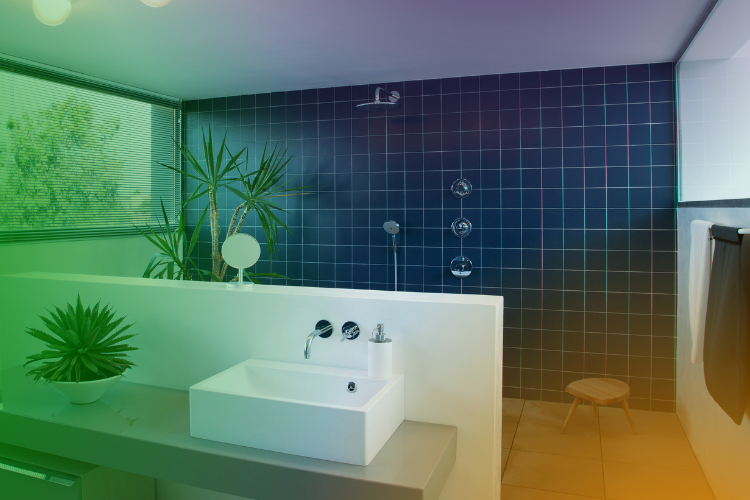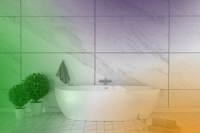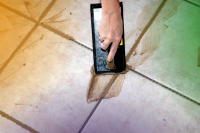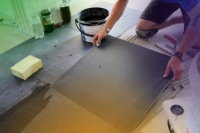Tiles feature somewhere in most bathrooms, whether on the floor, on the walls, or on both. Choosing tiles can be bewildering, as there’s just such a huge choice. Tiles come in all different sizes, colours and designs. When it comes to style and colour, that’s a matter of personal taste by and large, so there are no rights and wrongs. The material which the tiles are made from is more important to consider, and different materials are more appropriate in different circumstances.
Ceramic Tiles
Ceramic tiles are made from a clay-like material which is baked at high temperatures in a kiln to harden them. Ceramic tiles are generally a more economical choice than tiles made from other materials, and can be made to any colour and design. The downside of ceramic tiles is that the surface can be more porous than porcelain tiles, which can mean the tiles soak up more moisture in the air. If you want to use ceramic tiles in a wetroom, for example, they might have to be glazed first. Ceramic tiles are generally very easy to look after, clean and maintain.
Porcelain Tiles
Porcelain tiles are made in a similar way to ceramic tiles, but using a different type of clay. The finished product is fine and smooth to the touch, and don’t absorb water in the same way as some ceramic tiles do. Porcelain tiles are hardwearing and a popular choice for bathrooms, whether on the walls or the floor. The downside to porcelain is that they are significantly more expensive than ceramic, and are more fragile too. They can also start to discolour if harsh chemicals are used, so they need to be cleaned carefully. Many people choose to use porcelain tiles on the floor where water resistance is key, and a cheaper contrasting ceramic tile on the walls.
Stone Tiles
Stone tiles aren’t made in a factory, they are cut out of the ground and then sliced to shape on a special machine. This means there is natural variation within the tile, and it gives a more organic look to your floor or walls. Marble and slate are both popular choices, and are hardwearing and very easy to maintain. Most stone tiles can be laid over underfloor heating systems too. Depending on the type of tile you choose, you might need to seal the tiles every year to keep them waterproof and stop them from becoming stained.
Glass Tiles
Glass tiles are shiny and hardwearing and are most commonly used to make mosaic tiles or elaborately patterned feature tiles for a border or splashback. Glass tiles are very hardwearing and will not absorb any water so are a good choice for a wetroom. The glass manufacturing process also makes it possible to produce tiles in a rainbow of colours and with vibrant patterns on them too. The downside to glass is that it’s often slippery, so isn’t always appropriate for using on the floor.








